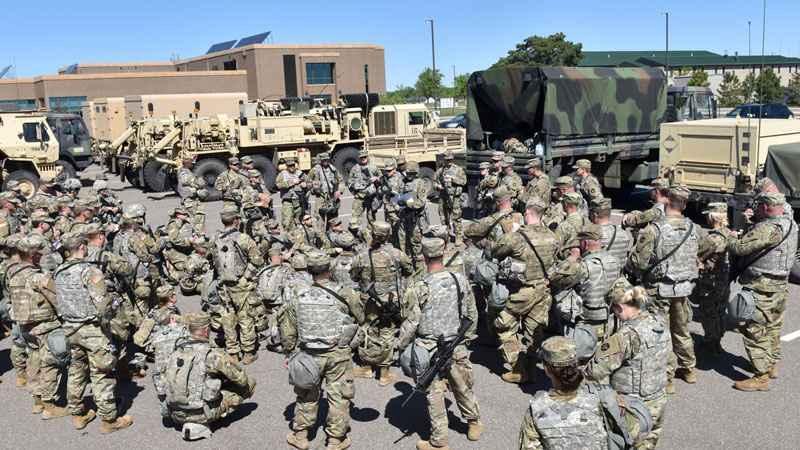Minnesota National Guard report outlines lessons learned during last summer’s riots
[anvplayer video=”5011181″ station=”998122″]
A new report out by the Minnesota National Guard details a lack of coordination, understanding and planning between agencies and officials responding to last summer’s civil unrest.
The after-action report was delivered to state legislators on Thursday, on the eve of the Derek Chauvin trial, where members of the Guard and law enforcement are once again preparing for unrest.
According to the report, “it was clear there are differing levels of understanding within various levels of city and county officials, incident commanders and police officers pertaining to the request process to mobilize the National Guard.”
At the time, there was a lot of finger-pointing over the Guard’s slow response. The Guard had always said it never could deploy troops until it received a mission.
“From the beginning of the civil disturbance… there was a constant struggle to receive validated missions and tasks,” the report said. And there were times when the guard’s “capabilities and limitations were not fully understood.”

FILE[Minnesota National Guard ]
The lesson learned, according to the report, is to “make available the National Guard 101 brief to newly elected mayors, city administrators, and emergency managers of the cities.”
As the looting and riots escalated, Gov. Tim Walz ordered an unprecedented full mobilization of the guard. It meant more than 7,000 troops were deployed.
According to the report, “no one in the organization had experience with this type of mobilization.”
The coordination between all the agencies is much different nine months since the unrest last summer.
5 INVESTIGATES was first to report on Operation Safety Net — another potentially massive deployment by the National Guard to assist local law enforcement in the coming weeks.
“We have plans in place to meet the requests in both Minneapolis and St. Paul in supporting law enforcement efforts to maintain the peace,” Maj. Gen. Shawn Manke said during a joint press briefing on Feb. 17.
While the after-action report focuses on the lessons learned, it also highlights some of the successes from the Guard’s response.
For instance, the Guard turned to food trucks to help feed the thousands of citizen-soldiers during the riots. Many restaurants had been shut down due to the pandemic, but they found food trucks to be “highly mobile, flexible and accommodating.”
The Guard reported that it spent more than $2 million for food at various food trucks.